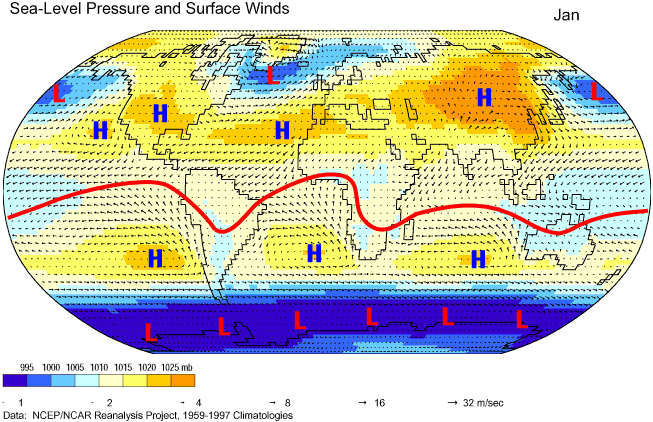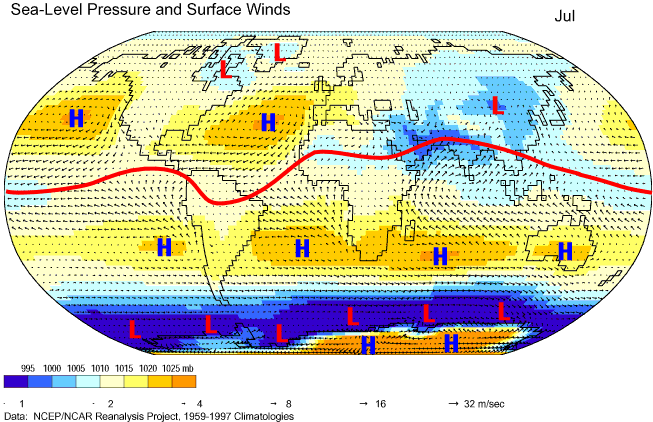Some details, some are more evident than other but might still be educative:
Rossby wave. While not unique to America, it have a unique characteristic one this continent as explained in this article : http://www.americanscientist.org/iss...mild-climate/3
The Arctic is cold and trapped in ice with low evaporation. A high albedo: reflect a lot of energy to space instead of absorbing. This result in low humidity.
In summer:
One things I haven't really figured out is where the influence of the front ends. I believe that it extends farther south that it's counterpart in Europe, but I don't know where it ends.
America is large enough to create his own modest monsoon. Mexico can be pretty rainy. There is the altitude but there is also a low pressure system around. It's not the ITCZ but possibly and extension of it? Anyway, all of central America is really wet.
July: during the cold season, the coasts receive some rain but it's not much and it's mostly if they are at right angle with the winds coming from the sea. The rest is dry except for the ITZC. Again, the rain belt is mostly a straight line. The Horn is still dry because it receive winds from the interior of the continent blowing toward Arabia...
South America:
January: A lot of things are still obscure about this continent. It receive more rain than Africa. Larger landmasses tend to become hotter and become larger low pressure center. This and apparently, the Amazon forest generates 50-80% of it's the region's precipitations. I've found this data on Earth Stackexchange but, I'm not sure the source is good. The forest must help keeping the place more humid but maybe the influence is smaller.
The reason why there is a larger forested area in SA compared to Africa is probably because the variation of the ITCZ is smaller than in Africa, the center of the continent seems closer to the equator. Just some theories.
Aside from that, Eastern Brazil is drier because it receive drier air from the high pressure system. That relation is inversed in winter but I'll talk about it later.














 Reply With Quote
Reply With Quote
